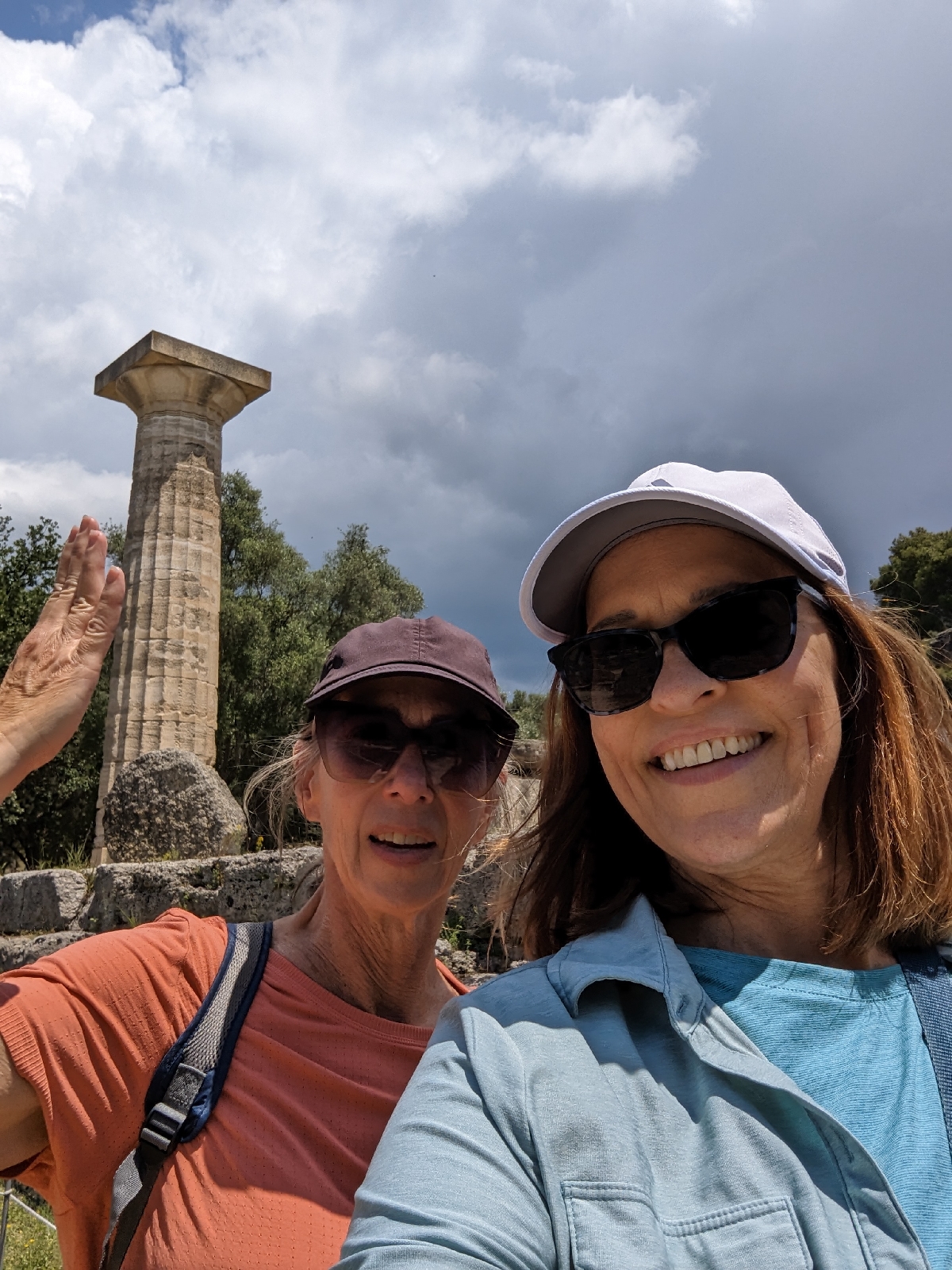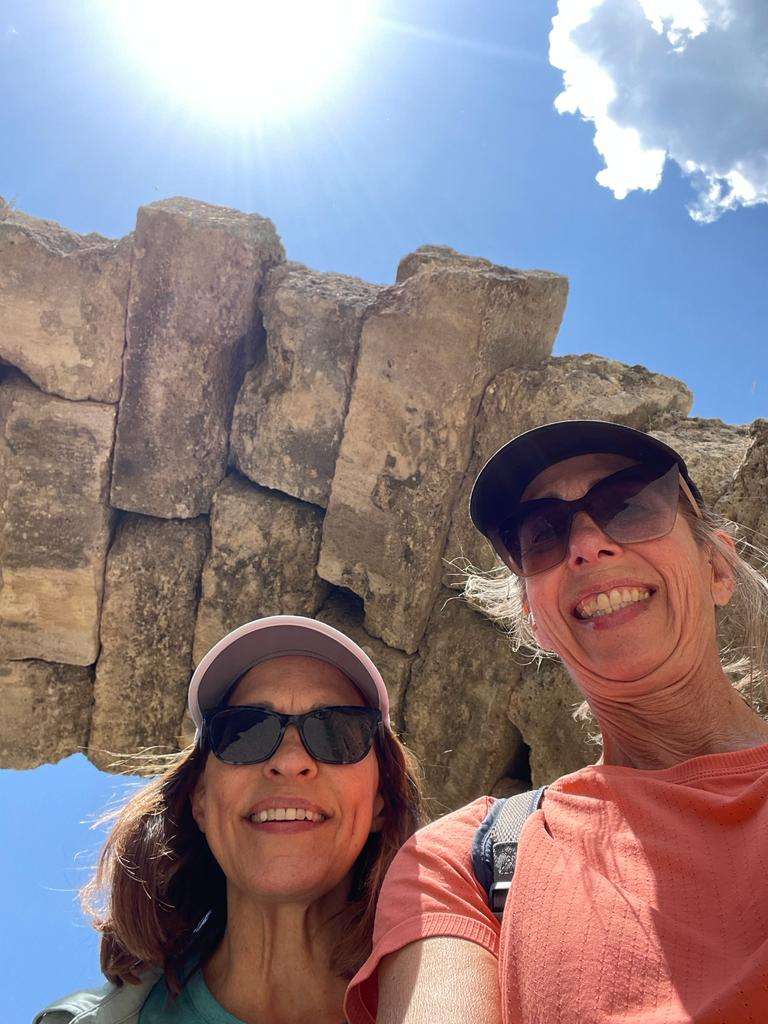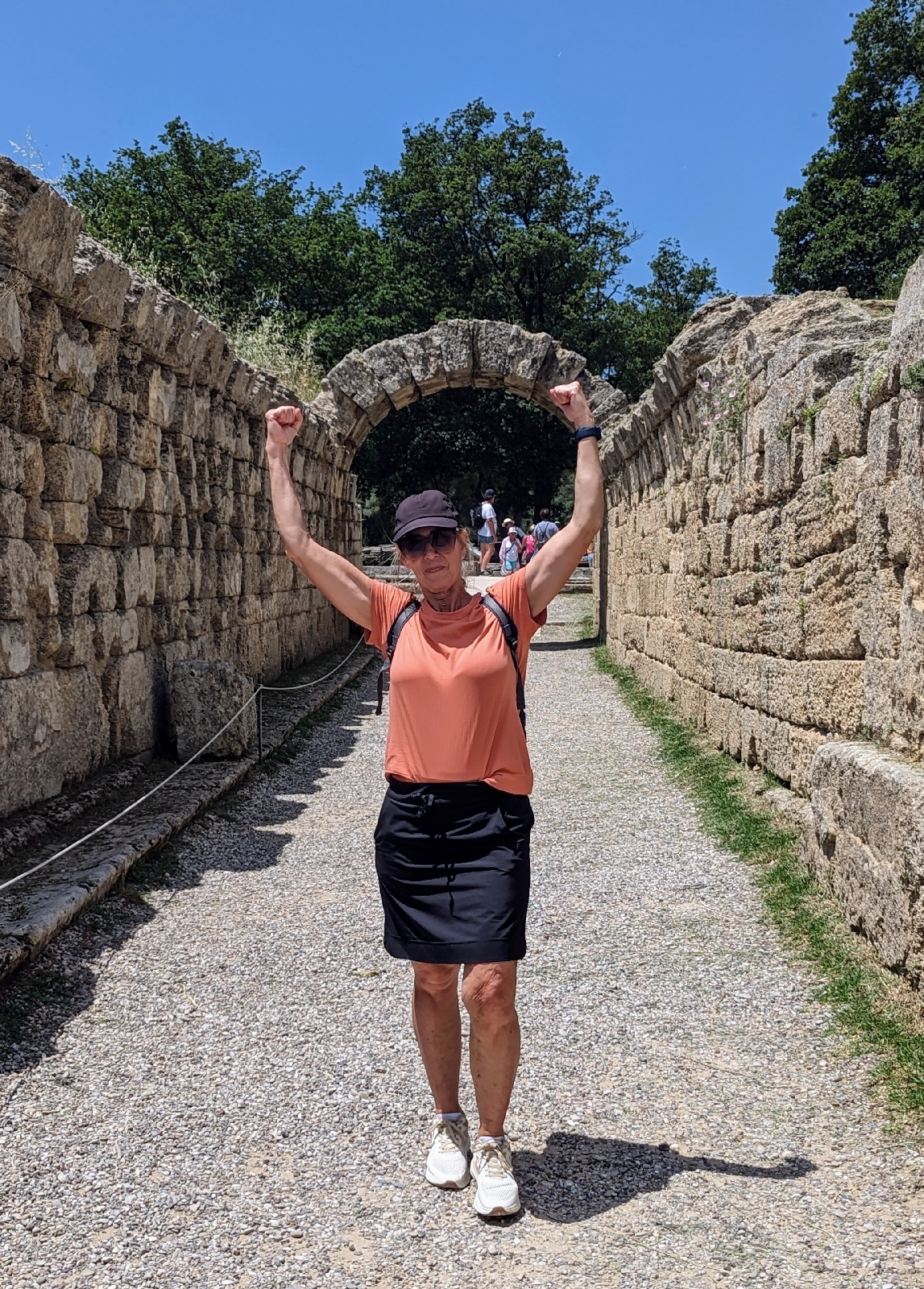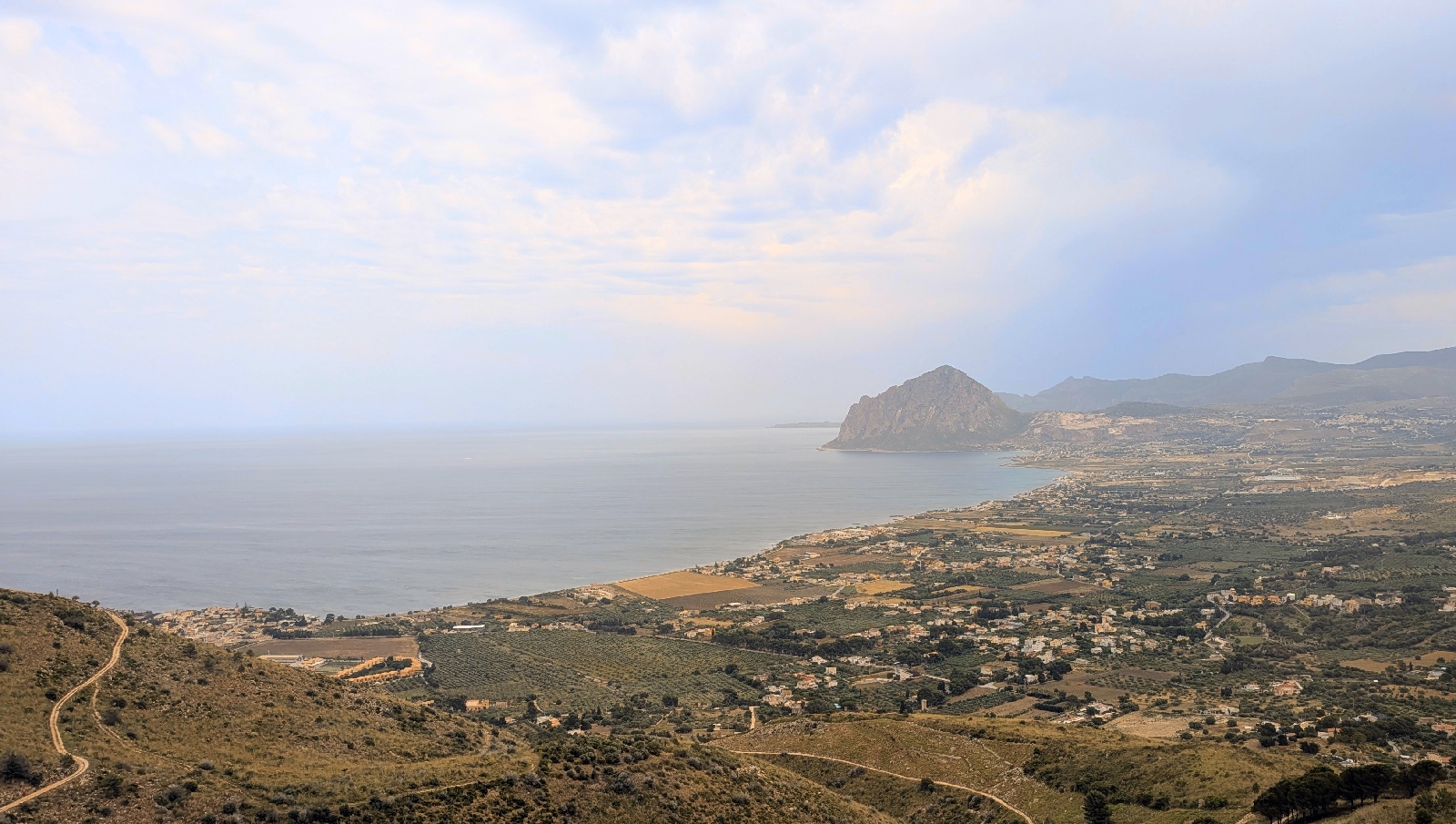Ancient Olympia
Wednesday May 31, Day 5 on tour
Olympia - birthplace of the Olympic Games!
Model of the Sanctuary of Olympia 300-400 AD
From the peaceful mountain village of Lagkadia, we set out for Ancient Olympia (map below). Much of the archaeological site at Olympia was built from the 8th to 6th centuries B.C. Wise men from the established Greek city-states started the Olympic Games there in an attempt to stop the constant wars. Greeks tried to educate their young men to use their energies to compete honorably instead of waging war. They were trained to be strong in body and mind. lnterestingly, society was matriarchal. Mothers were considered critically important in raising boys to become such men.
On the Road Again
Mary is zoning through the mountains on the way to Ancient Olympia
Roadside shrines looking like little churches appear regularly along the roads in Greece, in memory of those lost in car accidents, or in gratitude for survival. We saw many sizes and styles, but - like this one - they seemed about the size of a home mailbox to one of those little book huts. The shrines are all box- shaped to hold various offerings.
Ancient Olympia
First stop, the Archaeological Museum:
Our local tour guide Nikki described the statue behind her, created in Greek antiquity and unearthed at Olympia when German archeologists came in 1875 to excavate the site of the ancient games.
What could be happening in this dramatic scene? If you guessed Zeus is kidnapping yet another young, beautiful thing, you're right! So many stories in Greek mythology seem to start the same way. This "Zeus did it" plot provided the origin story for many mythological characters.
Two helmets from a victory that changed the course of history. The green one was worn by Athenian General Miltiades at the battle at Marathon - yes, that Marathon - and the conical one is from the defeated Persians.
Here I am contemplating the history of the world, and what it takes to run 26 miles to Athens bringing news of victory.
BUT the 26-mile marathon race was not an Olympic event in ancient times - it was created for the first modern Olympic Games in 1896.
What's left of this glorious statue of Nike (Victory) is carefully displayed in the museum, along with a lovely mural illustrating what she may have looked like in her full glory.
Roman Emperor Hadrian - we meet again, this time with all of his body parts. Check out the closeup of the design on his breastplate. The goddess Athena, representing the city of Athens as well as Greek culture overall, stands on the back of the well- known symbol of Rome: the she-wolf feeding Romulus and Remus. This represents how much Hadrian admired and tried to mimic Greek culture.
After the museum tour, Nikki brought us out to the archaeological site, where finding shade before listening to explanations was key.
We are about to enter the tunnel to the stadium.
This dramatic thunderstorm passed us by to the north, fortunately, although it was a bit too close for comfort.
Our entrants Mary, Thomas and Stephanie (his mom) return triumphantly from their races.
My starting pose is exactly that. Just a pose.
Trying to move one slice of a toppled column from the temple of Zeus.
Part Two: Olive Oil
and the road to Kardamyli
This map shows our route for the day. We escaped Ancient Olympia without being hit by a thunderbolt from an angry Zeus.
Now we're mugging in front of old-but-not-ancient machines for pressing olives into olive oil.
Jumping back on our favorite Mercedes tour bus, we headed for Kardamyli.
- Christine






























Comments
Post a Comment